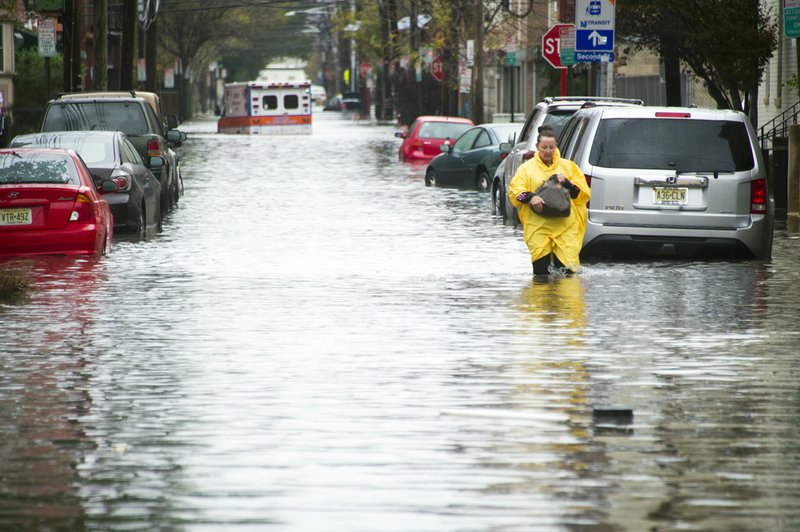NEW YORK — People in the coastal corridor battered by superstorm Sandy took the first steps Wednesday to reclaim routines upended by the disaster, even as rescuers combed neighborhoods strewn with debris and scarred by floods and fire.
But while New York City buses returned to darkened streets, two airports reopened and the New York Stock Exchange prepared to resume trading, it became clear that restoring the region to its ordinarily frenetic pace could take days, and that rebuilding the hardest-hit communities and the transportation networks that link them together could take considerably longer.
“We will get through the days ahead by doing what we always do in tough times — by standing together, shoulder to shoulder, ready to help a neighbor, comfort a stranger and get the city we love back on its feet,” New York Mayor Michael Bloomberg said.
The scale of the challenge was clear across the Hudson River in New Jersey, where National Guard troops arrived in the heavily flooded city of Hoboken to help evacuate thousands still stuck in their homes. And new problems arose when firefighters were unable to reach blazes rekindled by natural gas leaks in the heavily hit shore town of Mantoloking.
As New York began its second day after the megastorm, morning rush-hour traffic was heavy as people started returning to work. There was even a sign of normalcy: commuters waiting at bus stops.
On the Brooklyn Bridge, closed earlier because of high winds, joggers and bikers made their way across the span before sunrise. One cyclist carried a flashlight. Car traffic on the bridge was busy, and slowed as it neared Manhattan.
By late Tuesday, the winds and flooding inflicted by the fast-weakening Sandy had subsided, leaving at least 55 people dead along the Atlantic Coast and splintering beachfront homes and boardwalks from the mid-Atlantic states to southern New England.
The storm later moved across Pennsylvania on a predicted path toward New York State and Canada.
At the height of the disaster, more than 8.2 million lost electricity — some as far away as Michigan. Nearly a quarter of those without power were in New York, where lower Manhattan’s usually bright lights remained dark for a second night.
Much of the initial recovery efforts focused on New York City, the region’s economic heart. Bloomberg said it could take four or five days before the subway, which suffered the worst damage in its 108-year history, is running again. All 10 of the tunnels that carry commuters under the East River were flooded. But high water prevented inspectors from immediately assessing damage to key equipment, raising the possibility that the nation’s largest city could endure an extended shutdown of the system that 5 million people count on to get to work and school each day. The chairman of the state agency that runs the subway, Joseph Lhota, said service might have to resume piecemeal, and experts said the cost of the repairs could be staggering.
Power company Consolidated Edison said it would be four days before the last of the 337,000 customers in Manhattan and Brooklyn who lost power have electricity again and it could take a week to restore outages in the Bronx, Queens, Staten Island and Westchester County.
President Barack Obama is scheduled to visit New Jersey on Wednesday to tour what Governor Chris Christie described as “absolute devastation,” such as seaside towns with houses ripped from their foundations.
Meanwhile, state electric cooperative workers have been sent to the East Coast to help restore power.
Read tomorrow's Arkansas Democrat-Gazette for full details.
RELATED GALLERY
- http://www.arkansas…">Photo gallery: Hurricane Sandy
Information for this article was contributed by Bloomberg News.
